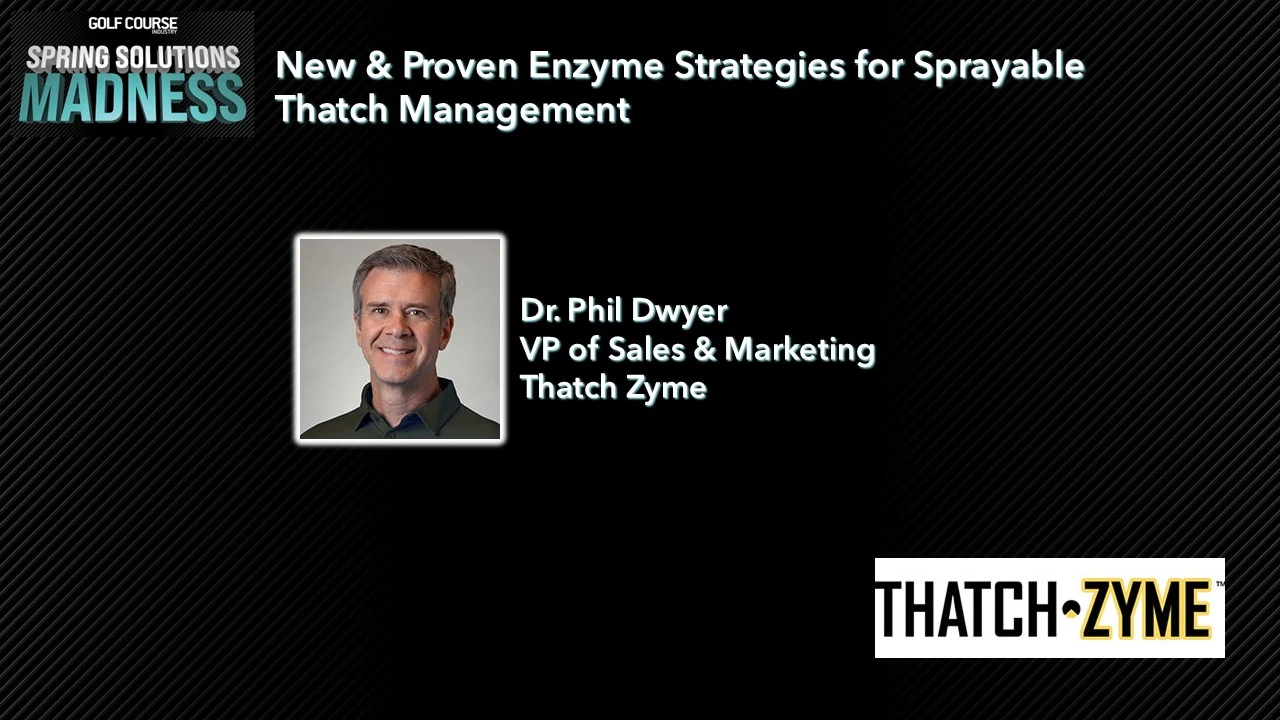
Tank mix with sub-quality water and you run the risk of rendering some active ingredients inactive. And as a result, it is unlikely fertilizers, fungicides, herbicides and pesticides will be utilized by target organisms (such as weeds, pathogens and insects) or be further degraded by soil or soil microorganisms.
Unwanted chemicals can be transported along with runoff or percolating waters to receiving waters that can contaminate natural water resources, says Dara M. Park, assistant professor, turfgrass, soil and water quality at Clemson.
Poor spray water quality can negatively impact some products or active ingredients, says Dr. Michael Fidanza, Penn State professor of plant and soil sciences. For example, some chemicals can break down in spray water with high pH in the sevens or eights. “This is known as alkaline hydrolysis, where chemical bonds are ‘severed,’ thus rendering the active ingredient useless against the target pest,” he says. “Thiophanate-methyl fungicide can break down in alkaline water. Product SDS’ list pH stability ranges, so be sure to review that information.”
Fidanza advises superintendents use spray water additives to adjust the pH so it’s near neutral before adding any products.
Most herbicide labels show registered pesticide tank mixes that are allowed, says Dr. Richard Zollinger, extension specialist in North Dakota State University’s Department of Plant Sciences. In addition, most pesticide labels recommend a compatibility or “jar test” where the applicator will mix the pesticides in a jar to make sure there is no negative affect when mixed with water, he says.
Following label directions is strongly advised when mixing pesticides. “Adding fertilizer to pesticide mixtures rarely has any negative effect on the water quality and may improve herbicide enhancement,” Fidanza says. “Fertilizer usually contains a nitrogen component and may contain a water conditioning component, both of which have positive effects on water quality.”
Improper tank mixing can lead to incorrect application rates, phytotoxicity, reduced active ingredient activity, excessive foaming or sludge formation in the tank, says David Loecke, PBI-Gordon market development manager for turf and ornamental products. “Any combination of these can have a negative effect on performance, equipment or the environment,” he says.
In addition, an improper tank mix can cause problems that hit a superintendent’s bottom line. “If too much product is added, it will likely be a waste of money,” Loecke adds. “Too little product and a re-spray may be necessary. And in the case of physical incompatibility, there may be disposal cost of the unusable solution.”
A common misconception among turf managers is that water only consists of H2O and has no other constituents. In fact, says Park, water can have many other minerals in it that may react with certain pesticides.
“The most common problems are associated with water pH,” Park says. “Many pesticides breakdown when pH is greater than 7 (some even at a slightly lower pH). This process is called alkaline hydrolysis. By simply testing water pH and correcting the problem, many water quality issues can be avoided. Besides actual water treatment, there may be other options.”
For example, if the water source is from a surface water body, consider filling the tank in the early morning hours. Surface water pH fluctuates throughout the day from the organisms that live within it. It is lowest during the early morning. Well water tends not to fluctuate as much unless the well experiences saltwater intrusion during dry periods.
“Another option may be to switch to a different water source, or to blend two water sources,” Park says. “If the water needs to be treated, there are many different options on the market. Some change the carrier water color to let you know you are in the right pH range. Others require you to retest the pH. Some pesticides even recommend on their label certain water conditioners to be used with the product.”
Superintendents can guard against improper tank mixing by checking compatibility, the modes of action, the order of adding chemical to the tank, calculations, and then using test strips to see the effect, says Dr. Deying Li, associate professor in the North Dakota State University’s Department of Plant Sciences.
In an effort to save time, labor and equipment wear, several products are added to the spray tank to “cover” many “targets” at the same time, Fidanza says.
“For example, these products could be two or three fungicides (one for dollar spot, one for pythium blight, maybe one for rhizoctonia blight), one or two plant growth regulators depending on the program, an insecticide, three or four plant/soil health products such as a fertilizer, or a phosphite, or iron, or various biostimulants, maybe a broadleaf herbicide or a post-emergence crabgrass herbicide and maybe one other product that may not have an actual agronomic value but helps one sleep at night,” he says. “And there’s value to a good night’s sleep.”
When tank mixing, it is important to know how pesticides or other components will react when mixed together in the same tank. In many cases, unknown tank mixes may cause physical or chemical incompatibilities, which can provide unexpected results or equipment damage, Loecke says. “When tank-mixing an unknown combination, conduct a jar compatibility test to determine whether the components are physically compatible, and whether you need to consider a compatibility agent,” he says. “A jar test only uses a small amount of each product, so you eliminate the risk of mixing an entire tank of spray solution.”
John Torsiello is a Torrington, Conn.-based golf writer and frequent GCI contributor.
Explore the July 2016 Issue
Check out more from this issue and find your next story to read.
Latest from Golf Course Industry
- From the publisher’s pen: Foggy intrigue
- USGA releases Water Conservation Playbook
- Vilamoura Golf courses awarded GEO Certified status
- GCSAA’s Health in Action 5K/2K reaches fundraising goal
- Landscapes Golf Management to participate in data analyzation initiative
- Reel Turf Techs: Carl Michael
- Atlanta Athletic Club approves funding for master plan
- Maximizing Cultural Practices and Agronomic Benefits with Minimal Surface Disruption





